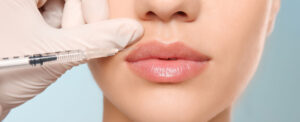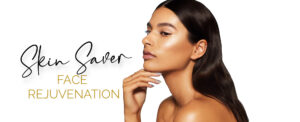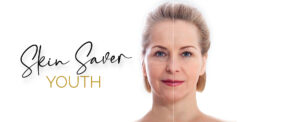Transforming Your Chin: A Comprehensive Guide to Understanding and Addressing Chin Ailments
Introduction
The importance of facial balance and harmony cannot be overstated when considering aesthetic appeal. The chin, often overlooked, plays a significant role in this facial balance. A well-defined chin adds to the symmetry of the face, while a protruding or weak chin can disrupt this balance, potentially affecting self-perception and confidence. With advancements in medical procedures, there are now effective solutions to address various chin ailments, from surgical procedures to non-surgical treatments for weak and pronounced chins. These procedures can not only enhance facial harmony but also improve the overall profile and boost self-confidence.
Understanding the Chin
Anatomy of chin
The chin is an essential part of our facial structure, composed primarily of bone and soft tissue. It’s located at the lowermost part of the face and is distinguished by the mental protuberance, which is the forward projection of the mandible or jawbone. Its role is not just limited to providing facial balance and improving aesthetics but also involves essential functions like speech and mastication. Depending upon genetics and individual growth patterns, the size and prominence of the chin can vary significantly among individuals, leading to classifications such as a weak chin or a protruding chin. A weak chin, also known as retrogenia, is when the chin recedes towards the neck, often giving the illusion of a double chin. On the other hand, a protruding or pronounced chin, known as progenea, extends beyond the plane of the face, creating an imbalance in facial symmetry.
Role in Facial Aesthetics and Balance
The chin’s role in facial aesthetics and balance is multi-faceted. For one, it significantly contributes to the perceived shape and contour of the face. A well-defined, balanced chin can create an impression of a square or rounder face, depending on its width and prominence relative to other facial features. Secondly, the chin directly impacts the profile view of a person. A weak chin can make the nose appear larger, or the neck less defined, while a protruding chin might overshadow other facial features.
Moreover, the chin’s position and size can affect the perception of the neck and lower face. A pronounced chin, for example, can make the neck seem shorter, while a weak chin can lead to the appearance of a double chin or an ill-defined jawline. Therefore, addressing chin ailments, such as a protruding or weak chin, through medical procedures can have a profound effect on overall facial balance and aesthetics, thereby enhancing an individual’s self-image and confidence.
What Is A Protruding Chin?
Definition and causes of a protruding chin
A protruding chin, also known as a prominent or jutting chin, is characterized by a chin that extends beyond the general proportion of the face. The cause of a protruding chin is often genetic, as it may be a trait inherited from family members. It can also result from specific growth patterns of the jawbone during childhood and adolescence.
Sometimes, a protruding chin can be a symptom of a medical condition known as prognathism. Prognathism is a condition where either the upper or lower jaw, or both, protrude forward. It’s categorized into maxillary prognathism (upper jaw protrusion), mandibular prognathism (lower jaw or chin protrusion), or a combination of both. Mandibular prognathism is the most common type, often leading to a pronounced chin.
While a protruding chin is not a health concern, it can cause an individual to feel self-conscious about their appearance due to the perceived imbalance it creates in facial harmony. However, modern medical procedures can effectively address this condition, enabling individuals to achieve the desired facial balance.
Aesthetic medicine procedures for correction: How to fix a protruding chin
There are several medical procedures available to correct a protruding chin, each with its unique benefits and considerations. The following are some of the most commonly employed methods:
Surgical Procedures:
- Genioplasty: This is a surgical procedure that involves cutting and repositioning the chin bone to achieve the desired position and shape. Genioplasty can either push back a protruding chin or bring forward a weak chin.
- Mentoplasty: Also known as chin reshaping, this surgical approach is used to alter the chin’s size, shape, or position. It can involve either reduction (for a protruding chin) or augmentation (for a weak chin).
- Orthognathic Surgery: A more extensive surgical procedure that involves repositioning the jaws. This is often considered when a protruding chin is caused by an underlying jaw alignment issue.
What Is A Weak Chin?
Definition and causes of a weak chin
A weak chin, also known as a recessive or retrusive chin, is one that does not project forward in line with the forehead and lip. Instead, it recedes towards the neck, often leading to an undefined jawline or the appearance of a double chin. The causes behind a weak chin are primarily genetic, with the trait often passed down from generation to generation. However, it can also be a result of certain developmental issues during childhood and adolescence.
In some cases, a weak chin can also occur due to aging, as we lose bone density and skin elasticity over time. This can cause the chin to recede and the skin around the neck and lower face to sag, leading to a less defined chin and jawline. While a weak chin is not typically a medical concern, it can negatively impact an individual’s self-perception and confidence due to the perceived disharmony it creates in facial aesthetics. However, with advancements in aesthetic medicine treatments, there are now multiple procedures available to effectively address a weak chin, enhancing facial balance and improving self-confidence.
Aesthetic medicine procedures for correction: How to correct a weak chin
There are a variety of medical and non-medical procedures available to fix a weak chin, offering promising results in enhancing facial symmetry and boosting self-confidence. Each of these methods will be elaborated upon in subsequent sections. They include:
Surgical Procedures:
- Chin Implants: These are surgical procedures where a synthetic material is used to augment the chin and improve its projection.
- Mentoplasty: A surgical procedure to modify the chin’s size, shape, or position, suitable for both weak and protruding chins.
- Sliding Genioplasty: This surgical procedure involves cutting and moving the chin bone forward to enhance a weak chin.
- Neck Lift or Liposuction: These procedures, often used in tandem with chin augmentation, help to redefine the neck and jawline, further enhancing the appearance of a strengthened chin.
- Orthodontics or Orthognathic Surgery: Used primarily when a weak chin is associated with dental malocclusion or jaw misalignment, these procedures aim to correct the underlying issue, which in turn improves chin appearance.
Non-Surgical Procedures:
- Injectable Fillers: A non-surgical method utilizing hyaluronic acid or calcium hydroxylapatite fillers to enhance the chin’s prominence.
Risks and benefits related to these procedures
| Genioplasty | Risks include infection, nerve damage leading to numbness or weakness in the lower lip, excessive bleeding, and unfavorable scarring. | This procedure offers permanent results and can significantly improve facial harmony by repositioning the chin bone. |
| Mentoplasty | Potential risks are infection, adverse reaction to anesthesia, blood clots, and asymmetry. | It can drastically enhance facial balance by altering the size, shape, or position of the chin. |
| Filler Injections | Potential side effects include swelling, bruising, infection, and rare cases of filler migration. | This non-surgical treatment can provide quick results with minimal recovery time. It’s also reversible if the patient is not satisfied with the outcome. |
| Orthognathic Surgery | Risks include infection, nerve injury, relapse of the condition, and prolonged healing time. | This procedure can address underlying jaw alignment issues, leading to improved facial aesthetics and function. |
| Chin Implants | Risks include infection, implant shifting, and an adverse reaction to the implant material. | It provides a permanent solution to enhance the projection and definition of the chin. |
| Sliding Genioplasty | Potential risks include bone resorption, nerve damage, and unfavorable scarring. | This method provides a permanent solution for a weak chin and allows the surgeon to have control over the degree of modification. |
| Neck Lift or Liposuction | Risks include infection, poor wound healing, and potential for visible scars. | These procedures can redefine the neck and jawline, enhancing the appearance of a strengthened chin. |
| Orthodontics or Orthognathic Surgery | Risks may include relapse of the condition, infection, and prolonged treatment duration. | These procedures not only improve the chin’s appearance but also correct the underlying dental malocclusion or jaw misalignment. |
Choosing the Right Procedure For Your Protruding Chin Or Weak Chin
Factors to consider: Health, cost, recovery times, etc.
There are several important factors to consider when deciding on the right procedure to correct your protruding or weak chin. First and foremost, your overall health is paramount as surgical procedures may not be suitable for everyone, particularly those with certain medical conditions or those who are not in good overall health. Additionally, the cost of the procedure is a crucial factor to contemplate, as not all procedures are covered by insurance and out-of-pocket expenses can be significant.
Recovery times, which can vary significantly from procedure to procedure, should also be taken into account when choosing the most appropriate chin correction procedure. For instance, surgical procedures, while they can provide more permanent and pronounced results, typically require longer recovery times than non-surgical options. Ultimately, the decision should be made in consultation with your healthcare provider, considering both the potential risks and benefits, and aligning with your personal aesthetic goals and preferences.
Importance of a consultation with a qualified surgeon
A consultation with a qualified surgeon is an essential step before deciding to undergo any type of chin correction procedure. This is an opportunity for you to discuss your expectations, aesthetic goals, and concerns. The surgeon will provide professional guidance based on their expertise and your specific needs. They’ll evaluate your overall health, review your medical history, and assess the structure and symmetry of your face.
A comprehensive consultation will also include a discussion about the various surgical and non-surgical options available, their associated risks and benefits, costs, and recovery times. The surgeon can also share before-and-after photos of previous patients which can help you understand what results you can anticipate. This session is also your chance to ask any questions and clarify any doubts you may have.
Remember, the decision to undergo a chin correction procedure should not be taken lightly. It’s crucial to feel comfortable with your surgeon and confident in their abilities. A comprehensive consultation will serve as a foundation for making an informed decision. After all, the goal is to enhance your natural beauty and boost your self-esteem, and this is best achieved with a surgeon who understands and respects your aesthetic objectives.
Conclusion
Emphasize the importance of individual’s comfort with their appearance
Your comfort with your appearance is of utmost importance. Whether you’re dealing with a protruding chin or a weak chin, your decision to change your appearance is personal. The goal of any procedure, be it surgical or non-surgical, is to enhance your natural features and help you to feel confident and comfortable in your skin. It’s essential to remember that there’s no universal ideal when it comes to facial features – what matters most is that you are content with how you look. Having a chin that you feel matches your face and your identity can significantly boost your self-esteem and positively impact your overall well-being.
Talk To Our Specialists Today
If you’re considering a chin correction procedure, whether to address a protruding chin or a weak chin, the expert team at CLINIQUE DES CHAMPS ELYSÉES NEW YORK is here to guide you through every step of the process. With our wealth of expertise, cutting-edge technology, and commitment to individualized care, we can help you achieve your aesthetic goals. Book a consultation with us today and start your journey towards enhanced confidence and satisfaction with your appearance. Remember, your comfort and happiness are our top priorities. Contact us today, and let’s shape a more confident you together!
FAQs:
What causes a protruding chin?
A protruding chin, also known as a prominent or jutting chin, can be caused by various factors. One of the most common causes is genetics; if one or both parents have a protruding chin, their children are more likely to inherit this trait. Secondly, it may be a result of certain medical conditions or syndromes, such as prognathism, which causes an overgrowth of the lower jaw bone. Lastly, it could also be due to malocclusion or improper alignment of the teeth and jaws, which can push the chin forward. However, it’s important to note that a protruding chin is not always a medical concern and can be a normal variation in facial features.
Can you fix a chin that sticks out?
Yes, a chin that sticks out, or a protruding chin, can indeed be corrected through various surgical procedures. These procedures include but are not limited to, genioplasty, chin implants, and orthognathic surgery, which should be chosen based on individual needs and the advice of a qualified surgeon.
Can a protruding chin be fixed without surgery?
There are many surgical and non-surgical procedures that can be performed for aesthetic chin changes; however, there are no non-surgical procedures that can be performed to diminish the appearance of a protruding chin.
What does a protruding chin look like?
















